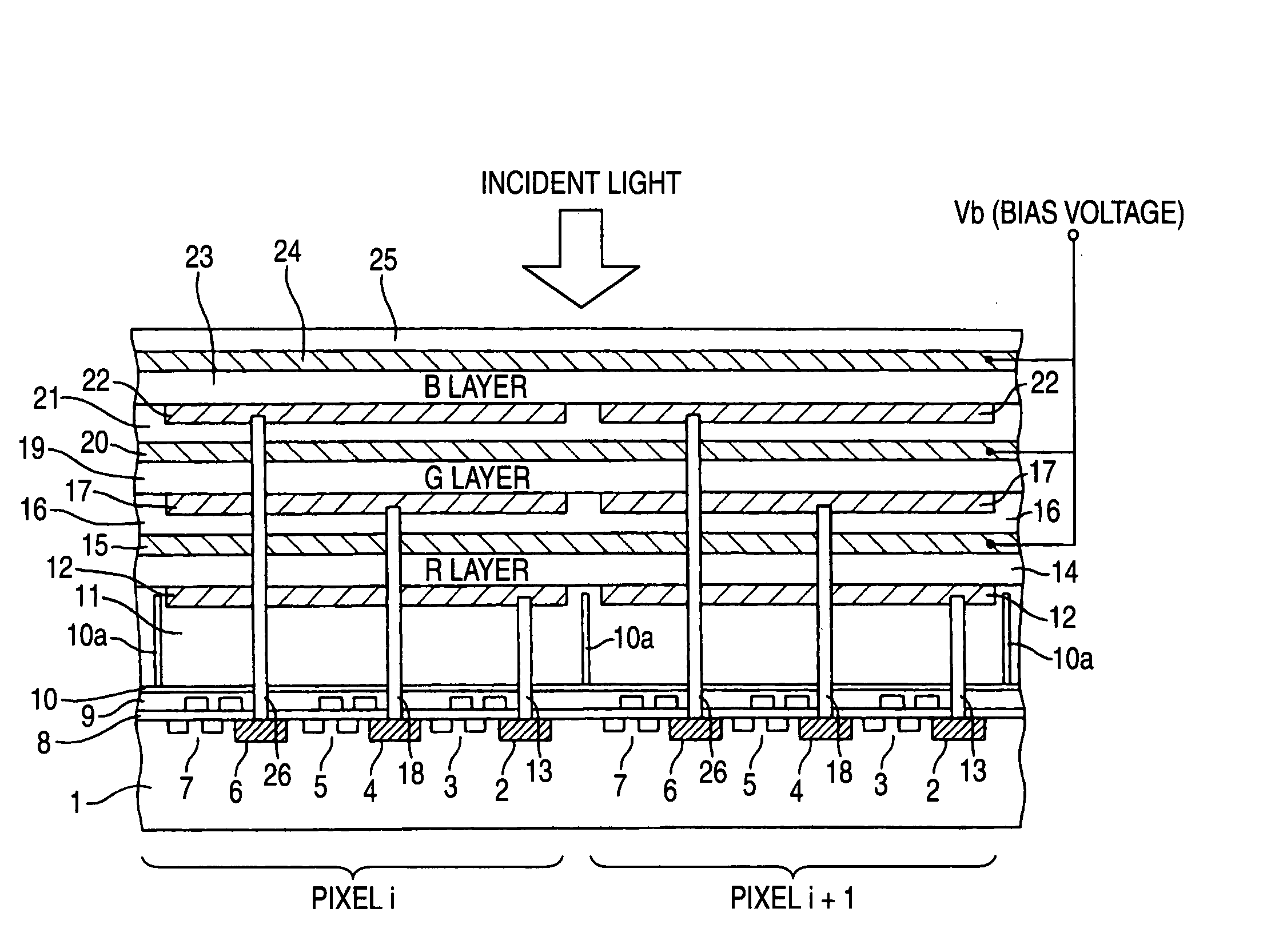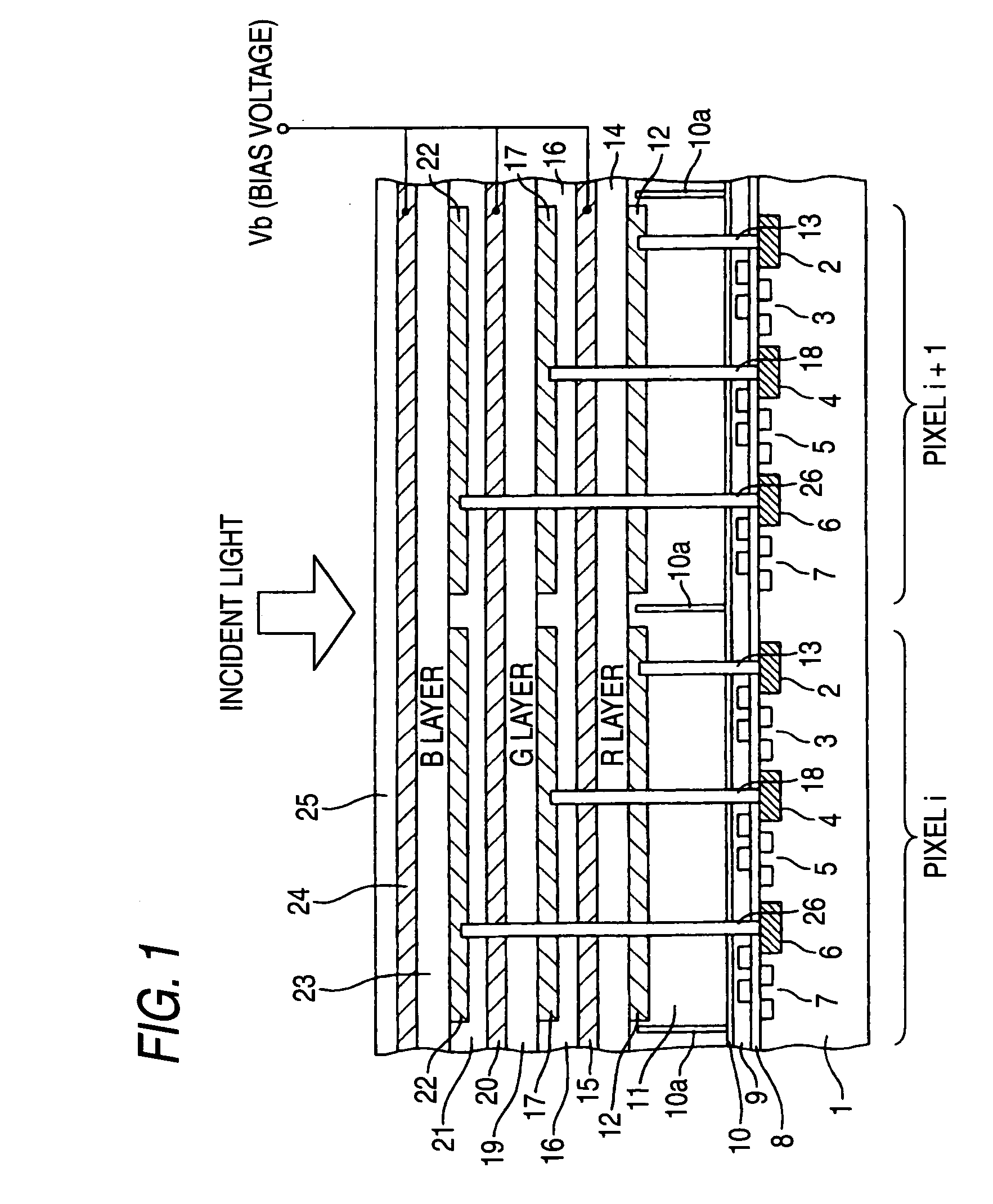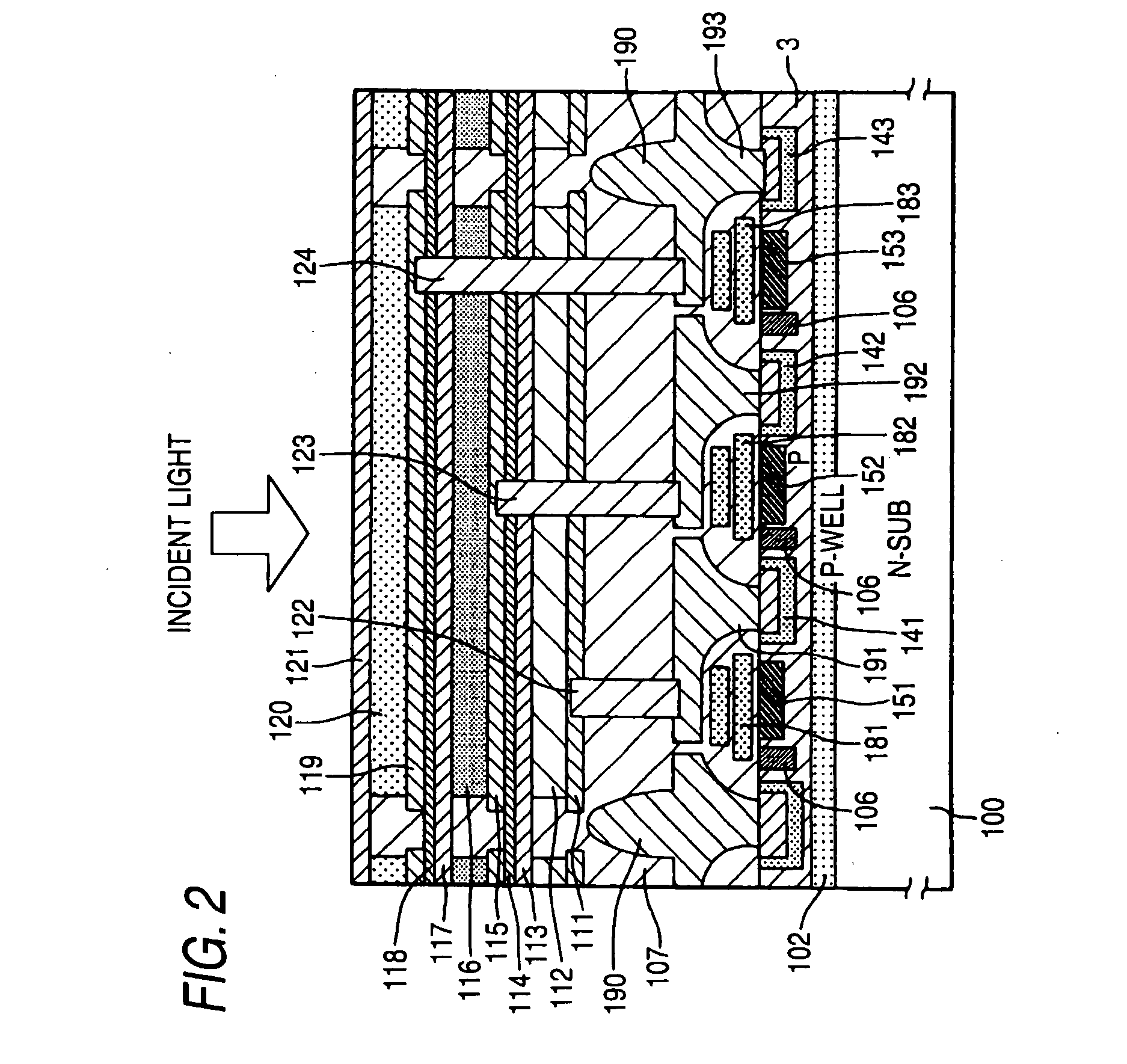Photoelectric conversion layer-stacked solid-state imaging element
a technology of solid-state imaging and photoelectric conversion, which is applied in the field of solid-state imaging elements, can solve the problems of poor production yield of image sensors, the upper limit of the amount of photocharge that can be stacked in one fine light-receiving portion, and the slow progress of ccd-type image sensors and cmos-type images, etc., and achieves high-quality color images.
- Summary
- Abstract
- Description
- Claims
- Application Information
AI Technical Summary
Benefits of technology
Problems solved by technology
Method used
Image
Examples
first embodiment
[0035]FIG. 1 is a diagrammatic sectional view of a two pixel portion of a photoelectric conversion layer-stacked solid-state imaging element according to a first embodiment of implementation of the invention. Since the basic configuration of the present embodiment is the same as that of the related art photoelectric conversion layer-stacked solid-state imaging element explained in FIG. 5, like numerals are used where the members are the same as those of the related art photoelectric conversion layer-stacked solid-state imaging element. Where the members are the same as those of the related art photoelectric conversion layer-stacked solid-state imaging element, no description is made.
[0036] In the photoelectric conversion layer-stacked solid-state imaging element according to the present embodiment, a shielding wall 10a made of the same material as that of a light shielding layer 10 is provided erected on the light shielding layer 10 at the pixel border portion in an insulating laye...
second embodiment
[0037]FIG. 2 is a diagrammatic sectional view of a one pixel portion of a photoelectric conversion layer-stacked solid-state imaging element according to a second embodiment of implementation of the invention. On the surface portion of a semiconductor substrate 100 is formed a signal reading circuit. The signal reading circuit may be formed by an MOS transistor circuit as in FIG. 1. In the present embodiment, however, the signal reading circuit is formed by a charge transmission channel as in the related art CCD type image sensor.
[0038] In the photoelectric conversion layer-stacked solid-state imaging element shown in FIG. 2, a P-well layer 102 is formed on the surface portion of an n-type semiconductor substrate 100. In a P-region 103 on the surface portion of the P-well layer 102 are formed a diode portion 141 which is a first color charge accumulating region, a diode portion 142 which is a second color charge accumulating region and a diode portion 143 which is a third color cha...
third embodiment
[0053]FIG. 3 is a diagram illustrating the configuration of the light shielding layer (lower electrode) of a photoelectric conversion layer-stacked solid-state imaging element according to a third embodiment of implementation of the invention. In the first and second embodiments, the shape of the portion of the light shielding layer interposed between the shielding walls (convex portion) 10a and 190 provided at the pixel border portion is flat. However, the photoelectric conversion layer-stacked solid-state imaging element according to the present embodiment is arranged such that light reflected by the light shielding layer under the original pixel goes toward the original pixel rather than the adjacent pixels.
[0054] In some detail, in the photoelectric conversion layer-stacked solid-state imaging element according to the present embodiment, the surface of the lower electrode interposed between the shielding walls 190 is concave such that the surface level is low at the central por...
PUM
 Login to View More
Login to View More Abstract
Description
Claims
Application Information
 Login to View More
Login to View More - R&D
- Intellectual Property
- Life Sciences
- Materials
- Tech Scout
- Unparalleled Data Quality
- Higher Quality Content
- 60% Fewer Hallucinations
Browse by: Latest US Patents, China's latest patents, Technical Efficacy Thesaurus, Application Domain, Technology Topic, Popular Technical Reports.
© 2025 PatSnap. All rights reserved.Legal|Privacy policy|Modern Slavery Act Transparency Statement|Sitemap|About US| Contact US: help@patsnap.com



